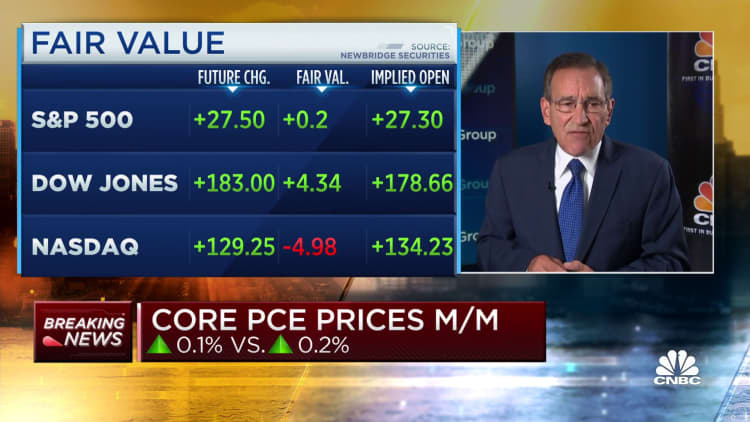
An economic indicator that the Federal Reserve favors as an inflation gauge surprised investors by rising less than expected in August, suggesting that the central bank’s efforts to combat rising prices are yielding results.
The personal consumption expenditures price index excluding food and energy increased 0.1% for the month, falling short of the anticipated 0.2% gain predicted by economists surveyed by Dow Jones, according to a report released Friday by the Commerce Department.
On an annual basis, the core PCE, which is the Fed’s preferred measure of inflation, registered a 3.9% increase, in line with forecasts.
This marks the smallest monthly increase since November 2020.
Additionally, consumer spending rose 0.4% on a current-dollar basis, a significant slowdown from July’s 0.9% growth. In real terms, spending only grew by 0.1% following a 0.6% increase in July.
When considering food and energy, headline PCE rose by 0.4% for the month and 3.5% compared to the previous year. Headline inflation has gradually climbed in recent months after reaching 3.2% in June.
While the PCE index is just one of the several indicators the Fed utilizes to measure inflation, it holds particular value due to its ability to account for changes in consumer behavior, such as the substitution of lower-priced goods for more expensive options. This provides a more accurate snapshot of the cost of living compared to the widely followed consumer price index, which does not consider substitution.
The core PCE reading, which excludes volatile food and energy prices, dropped below 4% for the first time in almost two years, marking a decline from the 4.3% reading in July.
“The Fed is likely pleased with the overall trajectory of the PCE report, but it is premature to declare victory over inflation,” commented Quincy Krosby, chief global strategist at LPL Financial.
Inflation for the month was primarily driven by a 6.1% surge in energy costs, according to the report. Food prices rose by 0.2%. On an annual basis, energy prices declined by 3.6%, while food prices increased by 3.1%.
The Fed targets a 2% inflation rate as an indication of healthy economic growth. The core PCE has not reached this level since February 2021.
Since March 2022, the central bank has been aggressively raising interest rates. However, they decided to skip the September meeting to assess the impact of the 5.25 percentage points worth of hikes implemented thus far. Market expectations suggest that the Fed has completed its rate hikes, although officials from the meeting indicated that one more quarter-point increase is likely before the year ends.
Several Fed officials have recently expressed expectations of persistently high interest rates for an extended period of time.
However, following the release of this report, market-based probabilities for future rate hikes decreased. Traders now estimate a mere 15% chance of a rate increase in November, down from 27.5% a week ago, according to the CME Group’s tracker of fed funds futures market pricing. The likelihood of an increase in December fell to around 31%, compared to over 42% a week ago.
Denial of responsibility! Vigour Times is an automatic aggregator of Global media. In each content, the hyperlink to the primary source is specified. All trademarks belong to their rightful owners, and all materials to their authors. For any complaint, please reach us at – [email protected]. We will take necessary action within 24 hours.


